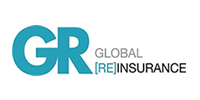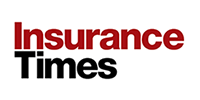’We can identify who’s safe and who needs frisking to confirm they’re not a risk. The metal detector doesn’t put a barrier down that stops you flying when it beeps red – it just points out the need for a secondary check,’ explains executive vice president
Claims fraud is an enduring challenge for the insurance sector, costing insurers hundreds of millions and adding to the premiums of legitimate customers.

Indeed, ABI research from November showed that some £1.16bn worth of fraudulent claims were lodged across 2024 – a 2% increase on the 2023 figure of £1.14bn.
Across all sectors, this research also showed that the exaggerating of claims remained the most common fraudulent activity, with a 10% growth in occurences year-on-year.
Separate research, conducted by insurer Ageas UK alongside YouGov, actually showed that nearly one in five (19%) people believed it was justifiable not to disclose the full truth on an insurance application – a figure that rises to 21% among those with motor insurance.
Fraud is undoubtedly increasing in cost, but insurers are stuck between a rock and a hard place. While they must address the rising prevalence of fraudulent behaviour, they must also ensure their claims processes remain as frictionless as possible for legitimate customers.
One necessity requires friction, while the other requires its removal. What is to be done?
There are many approaches being taken across the insurance sector, but a compelling one must allow for the effective triaging of legitimate customers, while highlighting potentially fraudulent people early on.
Manjit Rana, executive vice president for insurance at Clearspeed, describes this as the “metal detector approach”.
He says: ”If we didn’t have metal detectors at airports, then everybody would have to be frisked, meaning the queues would be way longer and we’d have to employ thousands of people to frisk passengers.
“But, because we do, we can identify who’s safe and who needs frisking to confirm they’re not a risk. The metal detector doesn’t put a barrier down that stops you flying when it beeps red – it just points out the need for a secondary check.”
Elegant solution
Utilising this metal detector approach to fraud detection is something that Clearspeed is seeing success with in the insurance sector.
Read: Insurance sector ‘could become vulnerable’ following new fraud rules
Read: Would I lie to you?
Explore more claims-related articles here, or discover other interview stories here
Initially used by militaries to screen and vet backgrounds, the company decided that its technology would have applications in commercial environments, including in insurance, three years ago.
Rana says: ”The voice analytics technology analyses the sound energy from a response to a simple yes-no question to identify risk, based on the way that somebody answers.
”It works by identifying something similar to the fight or flight response in the brain – when someone lies, those signals fly around in the brain while they figure out the best way to answer a question and our tech allows us to detect those signals and measure them.
“All we need is a yes or a no response, we don’t collect data on language or accent because that’s not what we’re listening for and may add bias into the process anyway.”
This may sound like an incredibly sci-fi approach, but Rana explains that insurance companies that have adopted the technology generally see a 20-30-fold return on investment.
He adds: “Imagine a secnario where a claims handler gets a call saying a customer’s car has been stolen. The questions we would analyse the responses to as most likely to be something like ’Do you know where the car is now? Are the keys in the car? Did the vehicle sustain any serious damage in the seven days before the theft?’
”If our tech flags that as acceptable, then handlers can move customers on through the claims process. But, if we flag a response as red, then they can be tracked through to a specialist claims handler.”
Eliminating bias
One of the crucial difficulties of implementing a system that indicates a customer may not be telling the truth is eliminating bias, so that natural human opinions about certain accents or use of language do not begin to submit one section of the population to unfair friction in the claims process.
Rana explains that Clearspeed’s voice analysis technology was designed with this in mind and only collects yes or no responses so that biases can’t be enforced against customers with identifiable vocal features.
He says: “The insurance application to this has resonated well because people have generally tried to identify fraud, in one way or the other, by profiling people and then deciding who needs a second look, which isn’t fair. People from a particular part of the country or with a certain credit score don’t deserve more attention just because of that.”
The other aspect of eliminating bias lies in the technology’s implemtation by insurers. Because it requires a voice response to use, some customers may not want to – or may be unable to – provide vocal responses.
Rana says this comes back to the metal detector analogy, where customers that don’t want to submit voice recordings don’t have to, but then can be investigated further because of that.
Ultimately, Clearspeed sees a number of applications for this sort of verification technology in the insurance sector, with Rana explaining that it only addressed claims fraud first as this was “low-hanging fruit”.
He says: “We’re now looking at application fraud and having discussions about replacing telematics devices with a Clearspeed questionaire instead. All lots of motor insurers want to really know is if you’re using your mobile phone regularly while driving, speeding or taking part in race meetings or using your car for deliveries.
”If we can eliminate the cost of installing telematics devices by just getting customers to answer those questions, we can also save the cost of collecting, storing and analysing that data, which would be a big saving.”

With a particular interest in regulation, technology, innovation and political stories, he has covered issues from the multioccupancy buildings scandal to the insurance implications of quantum computing and the growth of new markets.View full Profile
Hosted by comedian and actor Tom Allen, 34 Gold, 23 Silver and 22 Bronze awards were handed out across an amazing 34 categories recognising brilliance and innovation right across the breadth of UK general insurance.























































No comments yet